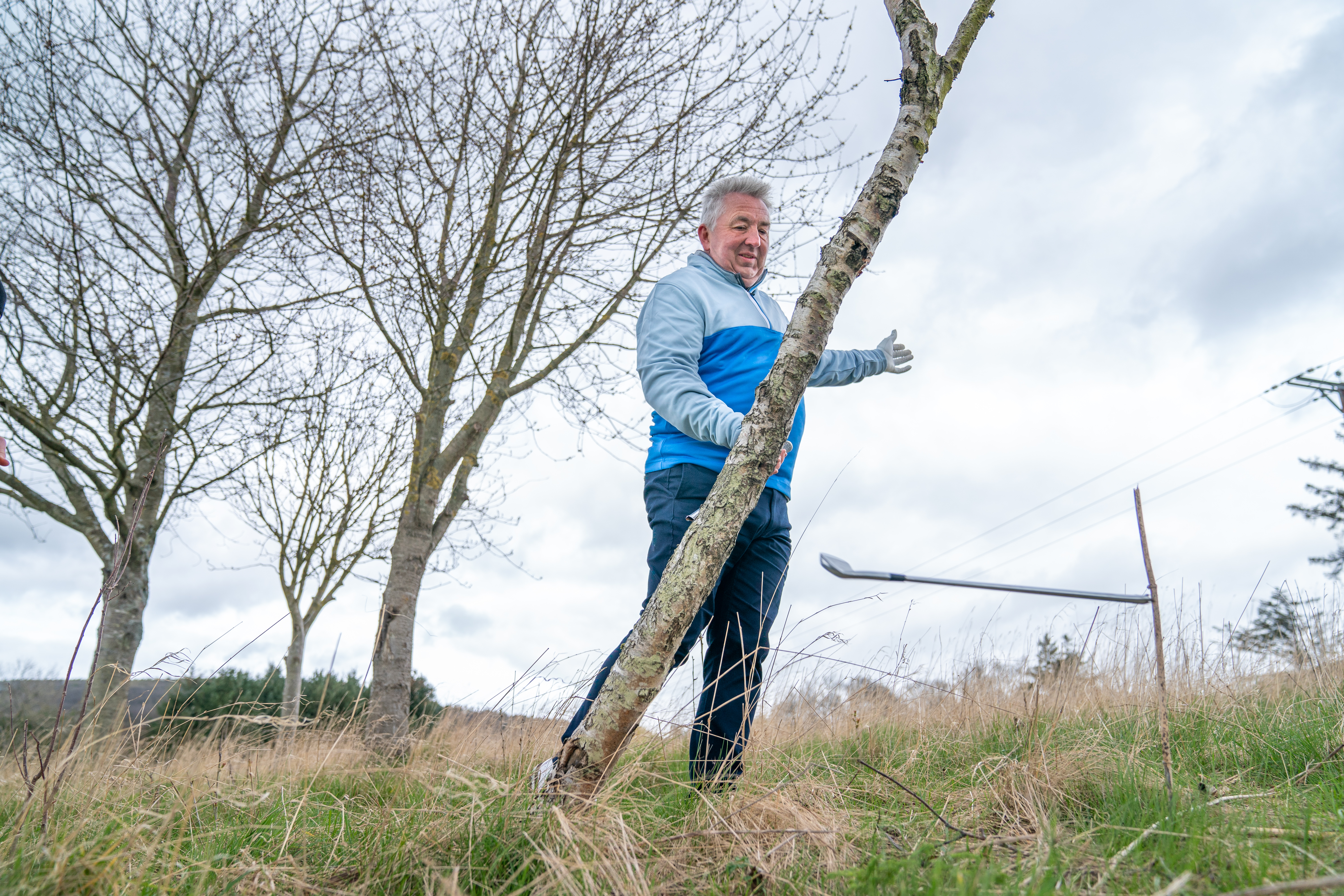What Happens If Your Club Breaks During A Round Of Golf?
What do the Rules of Golf allow you to do if you break a club by accident, and what if the damage was deliberate? We explain your options here...


Our headline question here may imply a club breaking passively (or accidentally), perhaps as a result of taking on a risky shot close to a tree, with shaft coming into contact with trunk or branch after impact, or maybe your bag toppling over and coming crashing down on a windy day.
But we’re also going to address here a club being broken aggressively, perhaps either by being slammed into the ground too hard in frustration, or occasionally even being broken very deliberately over a knee when this inherently testing game just all gets a bit too much. Hands up who’s been guilty of this? I’m no saint, but I'm pleased to say that I’ve always been able to pull myself back from the brink, yet fully understand the sentiments that can lead to such actions.
The distinction between passive and aggressive breakages is an important one to make, for there are some differences in what the Rules allow you to do in each scenario. It’s also worth mentioning that what the Rules allow you to do, and what you may actually be able to do practically or logistically, may well be two different things for the majority of us, certainly at club level. Allow me to explain, with the help of Rule 4.1a(2), where you will find all the information you need.
The first part of the Rule says that if a club is damaged during a round, it is considered ‘conforming’ for the remainder of the round and may still be used if it is still usable. This, of course, may not be an option if the club is now in two pieces, although I guess there may still be scenarios where using what is now a very short club could just come in handy. Should there be a play-off, that is when the concession to carry on using that club stops, as a play-off is considered a new round under the Rules.

If your club breaks while playing a risky shot, you may carry on using what's left of it or get it repaired or replaced if you can do so without unreasonably delaying play
That difference between passive and aggressive damage then lies in what other options are available to you, for Rule 4.1a(2) goes on to explain that you may also repair or replace a damaged club… but not if it was broken through abuse. So, if you broke it through a deliberate act, tough.

If you break a club in anger, you can still carry on using what's left of it but may not get it repaired or replaced
And even if you didn’t, of course, at club level, getting a club repaired in time to continue using it for the rest of the round is pretty unlikely, with Rule 4.1b(4) stating that you must not unreasonably delay play in either getting a club repaired or replaced. Even the latter is fairly unlikely at club level, but I guess if the 9th hole comes back to the car park and you happen to have a spare driver or putter in the boot of the car, for example, there would be scope to replace a club then – as long as the damage wasn’t caused by abuse.
If you do replace a damaged club with another club, you must also take the damaged club out of play before making another stroke, using the procedure in Rule 4.1c(1), which says you do this by:
Get the Golf Monthly Newsletter
Subscribe to the Golf Monthly newsletter to stay up to date with all the latest tour news, equipment news, reviews, head-to-heads and buyer’s guides from our team of experienced experts.
* Declaring this to the opponent in match play or the marker or another player in the group in stroke play
or
* Taking some other clear action (such as turning the club upside down in the bag, placing it on the floor of the golf cart or giving the club to another person).
The penalty for making a stroke with a club in breach of Rule 4.1a is disqualification – for example, repairing or replacing a club that you damaged in an angry outburst then hitting a shot with it.

Jeremy Ellwood has worked in the golf industry since 1993 and for Golf Monthly since 2002 when he started out as equipment editor. He is now a freelance journalist writing mainly for Golf Monthly. He is an expert on the Rules of Golf having qualified through an R&A course to become a golf referee. He is a senior panelist for Golf Monthly's Top 100 UK & Ireland Course Rankings and has played all of the Top 100 plus 91 of the Next 100, making him well-qualified when it comes to assessing and comparing our premier golf courses. He has now played 1,000 golf courses worldwide in 35 countries, from the humblest of nine-holers in the Scottish Highlands to the very grandest of international golf resorts. He reached the 1,000 mark on his 60th birthday in October 2023 on Vale do Lobo's Ocean course. Put him on a links course anywhere and he will be blissfully content.
Jezz can be contacted via Twitter - @JezzEllwoodGolf
Jeremy is currently playing...
Driver: Ping G425 LST 10.5˚ (draw setting), Mitsubishi Tensei AV Orange 55 S shaft
3 wood: Srixon ZX, EvenFlow Riptide 6.0 S 50g shaft
Hybrid: Ping G425 17˚, Mitsubishi Tensei CK Pro Orange 80 S shaft
Irons 3- to 8-iron: Ping i525, True Temper Dynamic Gold 105 R300 shafts
Irons 9-iron and PW: Honma TWorld TW747Vx, Nippon NS Pro regular shaft
Wedges: Ping Glide 4.0 50˚ and 54˚, 12˚ bounce, True Temper Dynamic Gold 105 R300 shafts
Putter: Kramski HPP 325
Ball: Any premium ball I can find in a charity shop or similar (or out on the course!)
You must confirm your public display name before commenting
Please logout and then login again, you will then be prompted to enter your display name.
-
 Could LIV Golf Receive A Pathway Into The Masters? Fred Ridley Reveals Augusta National's Stance On The Matter
Could LIV Golf Receive A Pathway Into The Masters? Fred Ridley Reveals Augusta National's Stance On The MatterThe Augusta National chairman has outlined Augusta National's position on a potential pathway to the Major for LIV Golfers after a similar move by the US Open and The Open
By Mike Hall Published
-
 'We Will Be Dealing With That Issue This Week' - Augusta National Chairman Addresses Slow Play Issue
'We Will Be Dealing With That Issue This Week' - Augusta National Chairman Addresses Slow Play IssueThe Augusta National chairman says that the issue of slow play is being discussed - and suggests that a solution could be on the way
By Michael Weston Published